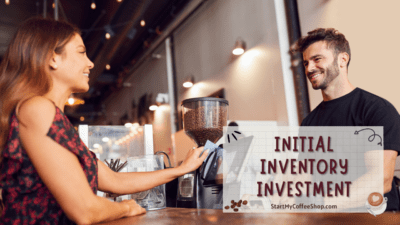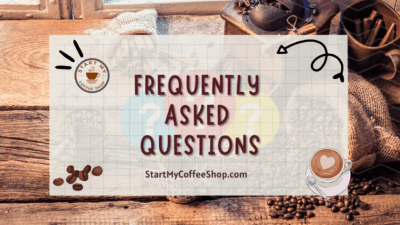Opening a coffee bar is a dream for many entrepreneurs and coffee enthusiasts alike. However, it’s crucial to have a clear understanding of the costs involved in turning this dream into a reality.
The average cost of opening a coffee bar can vary widely depending on factors such as location, size, equipment quality, staffing needs, and licensing requirements. However, a rough estimate would range from $80,000 to $300,000 or more.
From finding the perfect location to investing in equipment and staff, this article will provide a comprehensive breakdown of the key factors influencing the cost of opening a coffee bar.
1. Location
When it comes to opening a coffee bar, selecting the right location is paramount. The cost of renting or purchasing a space can fluctuate greatly depending on factors like the city, neighborhood, and foot traffic. Establishments situated in prime locations, with bustling streets and high visibility, often come with higher lease rates due to increased demand. Conversely, less populated areas may provide more affordable options, albeit with potentially lower customer volume.
To make an informed decision about the location, conducting comprehensive market research is essential. This entails analyzing the local coffee culture, identifying competitors in the vicinity, and gauging the preferences and demographics of the target audience. Understanding the target market’s behaviors and preferences helps in selecting a location that aligns with their needs and offers potential for growth and profitability.
Additionally, considering foot traffic patterns is crucial. Locations near busy intersections, business districts, shopping centers, or educational institutions may attract a steady stream of potential customers. Assessing the accessibility, parking availability, and public transportation options in the area also plays a role in determining the convenience of the location for customers.
2. Space and Layout
The size and layout of a coffee bar are significant factors that influence the overall cost of the venture. Larger spaces generally entail higher upfront investments and ongoing expenses.
These include higher rent or mortgage payments, increased utility bills, and additional maintenance costs. It’s important to carefully assess the financial feasibility of a larger space and consider the projected customer demand to ensure it aligns with the business goals.
When planning the layout, the goal is to optimize the utilization of space and create an inviting atmosphere for customers. A well-designed layout not only enhances the customer experience but also improves workflow efficiency for the baristas. Collaborating with an architect or designer can be beneficial in achieving an optimal layout that balances functionality, aesthetics, and cost considerations.
An architect or designer can help in making the most of the available space by strategically placing the coffee bar, seating areas, and other essential components. They can offer expert advice on factors such as the flow of traffic, ergonomics, and space utilization. Furthermore, they can assist in selecting appropriate fixtures, lighting, and furnishings that align with the desired ambiance and branding of the coffee bar.
By investing in thoughtful planning and design, coffee bar owners can create an environment that attracts customers, encourages repeat visits, and fosters a positive brand image. This, in turn, can contribute to the long-term growth and profitability of the establishment.
3. Equipment and Furnishings
Investing in high-quality equipment is a pivotal aspect of ensuring the progress of a coffee bar. The cost of equipment can vary significantly based on the scale and complexity of the operation./
It encompasses a range of essentials, including espresso machines, grinders, brewing equipment, refrigeration units, and point-of-sale (POS) systems. These are the backbone of a well-functioning coffee bar and directly impact the quality of beverages served.

When selecting equipment, it’s crucial to strike a balance between quality, durability, and cost. Opting for reliable brands and models known for their performance and longevity can help minimize maintenance and replacement expenses in the long run. Conducting thorough research, reading reviews, and seeking recommendations from industry professionals can assist in making informed decisions.
In addition to equipment, the furnishings of a coffee bar also contribute to its overall ambiance and customer experience. Tables, chairs, lighting fixtures, and décor elements all play a role in creating a welcoming and comfortable atmosphere. Selecting furniture that aligns with the desired aesthetic and provides functionality is essential.
While it may be tempting to cut costs by opting for cheaper equipment or furnishings, compromising on quality can have detrimental effects on the business in terms of reliability, customer satisfaction, and long-term costs. Investing in high-quality equipment and furnishings sets the stage for a coffee bar that not only delivers exceptional products but also creates an inviting space where customers can enjoy their coffee experience.
Read more about Startup Business Cost for a Coffee Shop: Assessing the Startup Expenses for Your Coffee Shop
4. Staffing and Training
Staffing a coffee bar goes beyond simply considering wages. The specific staffing needs vary depending on the size and scope of the operation. It’s essential to take into account various costs associated with employees. These costs include not only their salaries but also payroll taxes, benefits, and training expenses.
Employee salaries make up a significant portion of the staffing costs. The number of employees required will depend on factors such as the size of the coffee bar, the expected volume of customers, and the range of services offered. Careful consideration should be given to staffing levels to ensure efficient operations while minimizing unnecessary expenses.
In addition to salaries, payroll taxes are another factor to consider. These taxes, including Social Security and Medicare contributions, are a legal requirement and add to the overall cost of staffing. It’s important to accurately calculate and account for these taxes when budgeting for employees.
Benefits, such as health insurance, retirement plans, and paid time off, are additional costs to factor in. While providing comprehensive benefits may increase expenses, it can also contribute to attracting and retaining talented and dedicated staff.
Training expenses are crucial for equipping employees with the necessary skills and knowledge to provide excellent customer service and maintain the quality of the coffee bar’s offerings. Investing in training programs ensures that staff members are well-prepared and capable of delivering a positive and consistent customer experience.
5. Licensing and Permits
Common licenses and permits include a business license, which grants authorization to operate a business in a specific area. Additionally, food service permits are typically necessary to ensure compliance with health and safety standards. These permits involve inspections to ensure proper food handling and sanitation practices.
If the coffee bar plans to serve alcoholic beverages, an alcohol license may be required. The process and cost of obtaining this license can vary significantly depending on the jurisdiction and the type of alcohol being served.
The costs associated with licenses and permits depend on the location and the specific requirements of the local government. It’s crucial to conduct thorough research to understand the licensing requirements and associated fees. By budgeting for these expenses in advance, coffee bar owners can ensure they meet all legal obligations and avoid any penalties or disruptions to their operations.
Obtaining the necessary licenses and permits may involve paperwork, inspections, and fees, but it is a vital step in establishing a legitimate and compliant coffee bar. Taking the time to understand the local regulations and budgeting for these expenses contributes to a smooth and legally sound operation.
6. Marketing and Advertising
Promoting a coffee bar is a crucial aspect of attracting customers and building a loyal following. Allocating a budget for marketing and advertising expenses is essential to effectively create awareness and generate foot traffic. These expenses may include various components such as branding, website development, social media management, print materials, signage, and local promotions.
Branding plays a key role in establishing the coffee bar’s identity and attracting the target audience. This includes designing a visually appealing logo, creating a cohesive brand identity, and developing marketing materials that reflect the coffee bar’s unique offerings and atmosphere.
A well-designed and user-friendly website is essential in the digital age. It serves as an online hub where potential customers can learn about the coffee bar, browse the menu, and get a sense of the overall experience. Investing in professional website development ensures a polished online presence.
Social media management is crucial for engaging with the target audience and building an online community. It involves regular content creation, interaction with followers, and leveraging platforms like Instagram, Facebook, and Twitter to showcase the coffee bar’s offerings and promotions.
Print materials, such as flyers, posters, and business cards, can be used to reach local customers and promote special events or discounts. Eye-catching signage is also important for attracting attention and guiding customers to the coffee bar’s location.
Local promotions, such as hosting community events, partnering with local organizations, or offering loyalty programs, can help foster customer loyalty and generate positive word-of-mouth.
7. Initial Inventory Investment
Stocking a coffee bar with a diverse range of high-quality supplies, including coffee beans, syrups, milk, pastries, and other essentials, requires an initial investment in inventory. It’s crucial to estimate the inventory needs and costs accurately to avoid the pitfalls of overstocking or running out of essential items. Collaborating with reliable suppliers and negotiating favorable terms can assist in managing these costs effectively.

Determining the right inventory levels involves analyzing factors such as customer demand, seasonality, and menu offerings. Understanding the preferences and consumption patterns of the target audience helps in forecasting the quantities of each item required. This ensures that the coffee bar can meet customer expectations without tying up excessive funds in excess inventory.
Collaborating with suppliers is crucial for sourcing high-quality products at competitive prices. Building strong relationships with suppliers can lead to favorable terms, such as bulk discounts or extended payment options. Regular communication with suppliers allows for adjustments in inventory levels based on customer feedback and changing market trends.
Implementing effective inventory management practices, such as regular stock counts, tracking expiration dates, and optimizing storage space, helps in minimizing waste and reducing costs. Utilizing inventory management software or systems can streamline the process and provide valuable insights into inventory trends and performance.
8. Ongoing Operational Costs
In addition to the initial investment, coffee bar owners must take into account ongoing operational expenses. These expenses encompass a range of crucial elements, including rent or mortgage payments, utilities, insurance, equipment maintenance, staff wages, inventory replenishment, marketing campaigns, and unexpected costs that may arise.
Rent or mortgage payments constitute a significant portion of the ongoing expenses. The cost of the physical space is a fixed expenditure that needs to be accounted for consistently. Utility bills, such as electricity, water, and internet services, are recurring costs that should be factored into the budget as well.
Insurance is essential for protecting the coffee bar from unforeseen events or liabilities. This includes general liability insurance, property insurance, and workers’ compensation insurance for staff members.
Maintaining equipment in optimal working condition is crucial for smooth operations. Regular servicing, repairs, and replacements are ongoing expenses that need to be considered. Staff wages, including payroll taxes and benefits, form a substantial part of the ongoing expenses as well.
Inventory replenishment is necessary to ensure a consistent supply of coffee beans, milk, syrups, pastries, and other consumables. Marketing campaigns, both digital and traditional, play a vital role in attracting and retaining customers, and allocating a budget for marketing is essential.
Lastly, unexpected costs, such as equipment breakdowns or repairs, may arise unexpectedly and should be accounted for in the budget.
Summary
Opening a coffee bar involves careful planning and financial consideration. From securing the right location to investing in equipment, staffing, licensing, marketing, and ongoing operational costs, understanding the various factors influencing the cost is crucial.
By conducting thorough research, creating a comprehensive budget, and making informed decisions, aspiring coffee bar owners can navigate the financial landscape and turn their coffee dreams into a great reality.
Remember, while the cost may seem daunting, a well-executed plan, coupled with passion and dedication, can lead to a flourishing and viable coffee bar. Good luck on your caffeinated journey!
Frequently Asked Questions

Q: How can I reduce costs when opening a coffee bar?
A: To reduce costs, consider options such as choosing a less expensive location, purchasing used equipment, negotiating favorable lease terms, implementing efficient staffing practices, and conducting thorough market research to optimize pricing and inventory management.
Q: Are there any hidden costs associated with opening a coffee bar?
A: Yes. These may include unexpected renovations or repairs, additional permit fees or regulatory requirements, fluctuating commodity prices for coffee beans, and unforeseen marketing or promotional expenses.
Q: What are the ongoing expenses I should anticipate after opening a coffee bar?
A: Ongoing expenses typically include rent or mortgage payments, utilities, staff wages, inventory replenishment, marketing and advertising costs, equipment maintenance, insurance, and licensing renewals.
To learn more on how to start your own coffee shop checkout my startup documents here
Please note: This blog post is for educational purposes only and does not constitute legal advice. Please consult a legal expert to address your specific needs.

Hi! I’m Shawn Chun
My adventure in coffee began when I first launched my first coffee shop back in the early 2000s. I had to figure out so many things on my own and to make it worse within 2 years of opening two large corporate coffee chains moved in just blocks away from me!
As I saw smaller and even some larger coffee shops in the neighborhood slowly lose customers to these giant coffee chains and slowly close up shop, I knew that I had to start getting creative…or go out of business.
I (like you may be) knew the coffee industry well. I could make the best latte art around and the foam on my caps was the fluffiest you have ever seen. I even had the best state-of-the-art 2 group digital Nuova Simonelli machine money could buy. But I knew that these things alone would not be enough to lure customers away from the name brand established coffee shops.
Eventually, through lots of trial and error as well as perseverance and creativity I did find a way to not only survive but also thrive in the coffee/espresso industry even while those corporate coffee chains stayed put. During those years I learned to adapt and always faced new challenges. It was not always easy, however, in the end, I was the sole survivor independent coffee shop within a 10-mile radius of my location. Just two corporate coffee chains and I were left after that year. All told the corporate coffee chains took down over 15 small independent coffee shops and kiosks and I was the last one standing and thriving.
Along the years I meet others with the same passion for coffee and I quickly learned that it is not only “how good a barista is” that makes a coffee shop successful, but the business side of coffee as well.
Hence why I started this website you are on now. To provide the tools and resources for up and coming coffee shop owners to gain that vital insight and knowledge on how to start a coffee shop successfully.
Stick around, browse through my helpful blog and resources and enjoy your stay! With lots of LATTE LOVE!
Shawn







